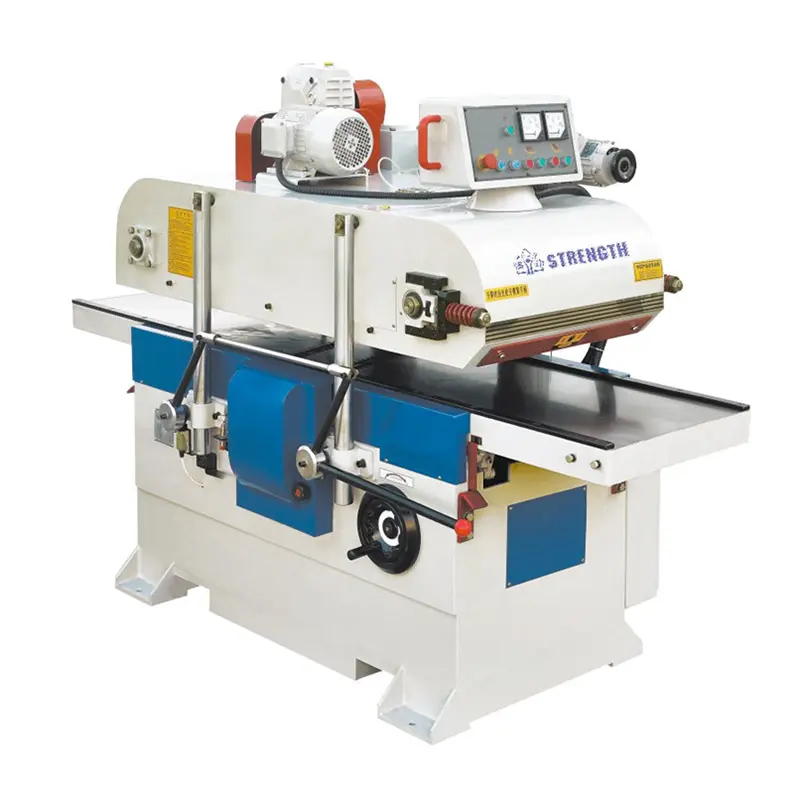Main application scenarios of planing
1. Introduction
Planing is one of the indispensable tools in woodworking, and it plays an important role in all aspects of wood processing. Whether it is furniture manufacturing, architectural decoration, or handicraft production, planing provides a solid foundation for wood processing with its efficient and precise performance. For international wholesale buyers, understanding the main application scenarios of planing will help to better evaluate its market demand and potential value. This article will introduce in detail the wide application of planing in different fields to help readers fully understand this important tool.
2. Basic functions of planing
The main function of planing is to plan or trim the plane and edges of wood. It uses a rotating blade to plane off the uneven parts of the wood surface to achieve a smooth and flat effect. The table width of the planer determines the size of wood it is suitable for processing. Common table widths are 152.4 mm and 203.2 mm. The larger the size of the planer, the more suitable it is for planing wide wooden boards, such as tabletops or panels.
3. Application of Planers in Furniture Manufacturing
(I) Rough Material Processing
In the early stages of furniture manufacturing, wood usually appears in the form of blanks with rough surfaces and inaccurate dimensions. Planers can be used to perform preliminary processing on these rough materials, remove burrs and uneven parts on the surface, and make them reach the reference surface required for subsequent processing. For example, a rough plane (a type of plane) is specially used for planing rough materials, and its length is usually 250-350 mm.
(II) Straightening and Boarding
For some longer wood, such as wood used to make table legs or cabinet frames, planers can help straighten and ensure the straightness of the wood. Long planes (length of 400-500 mm) are ideal tools for straightening operations. In addition, large planers are used for boarding operations to splice multiple pieces of wood into a flat panel.
(III) Surface Finishing
In the later stages of furniture manufacturing, the wood surface needs to be finely processed to achieve a smooth and flawless effect. A clean plane (also called a fine plane) is a tool specially used for fine planing, and its length is about 150 mm. It can process the burrs (i.e. diagonal and interlaced textures) on the surface of wood, making the surface smoother and more even.
4. Application of planing in architectural decoration
(I) Door and window processing
In architectural decoration, the production of doors and windows requires precise dimensions and smooth surfaces. Planing can be used to process the frames and fan surfaces of doors and windows to ensure their flatness and dimensional accuracy. For example, the production of curved doors and windows requires the use of a special flat plane (a flat plane) to achieve the smooth rounding and tight seam process of the wood surface.
(II) Floor laying
The laying of wooden floors requires that the thickness and surface flatness of each floor are consistent. Planing can be used to determine the thickness and width of wooden floors. Through the pressure planing (used in conjunction with the planing), the opposite surface of the wooden floor can be made smooth and parallel to the reference surface.
(III) Decorative line processing
Various decorative lines in architectural decoration, such as skirtings, waistlines, etc., require fine processing to ensure their beauty. Planing can be used to process the surface of these decorative lines to make them smooth and consistent in size.
5. Application of planers in craft production
(I) Preparation before carving
In the process of making wood carving crafts, planers can be used for preliminary processing of wood for carving. Planing the wood surface flat provides a flat processing reference surface for the carver.
(II) Complex curved surface processing
For some crafts with complex curved surfaces, such as wooden toys, decorative ornaments, etc., special models of planers (such as flat planers) can be used to process these complex shapes. For example, round-bottomed flat planers are suitable for concave surface finishing, while flat-bottomed ones are used for convex surface processing.
6. Application of planers in wood processing factories
(I) Batch processing
In wood processing factories, planers are usually used for standardized processing of large quantities of wood. Through mechanically fed planers, wood can be quickly processed into the required size and shape. Large cast iron planers are suitable for factory operations and can efficiently process wide wooden boards.
(II) Thickness and width setting
In the process of wood processing, thickness and width setting are very important steps. The flat planer can be used in conjunction with the pressure planer to ensure that the thickness and width of the wood are consistent. This is essential for subsequent splicing and assembly operations.
(III) Special wood processing
For some special woods, such as hardwood or wet wood, the planer’s tool and operating parameters need to be adjusted accordingly. For example, when processing hardwood, the blade angle of the planer needs to be appropriately increased to avoid damage to the planer blade.
Post time: Jul-18-2025

